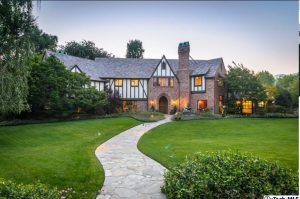For centuries, the art world has dealt with the dilemma of validating an artist. Buyers aren’t willing to pay a premium for work by a name artist, just to later learn that the piece was a forgery. In the Los Angeles real estate market, buyers will pay a premium for a home with an architectural pedigree. When it comes to homes designed by a famous architect, more than bragging rights are at stake. Homes designed by notable architects such as Paul Williams, Ray Kieffer, Palmer and Krisel, Buff, and Hensman, etc., can add five to ten percent additional value and sometimes even more. Selling a home designed by a famous architect is more entailed.

But how do you establish that pedigree? It depends, as some cities are easier than others. Most older permits in Glendale don’t note the architect’s name. Several years ago, I went on a La Canada listing appointment and knew as soon as I previewed the mid-century home, it was special. A quick visit to the city of La Canada to pull the permit proved that the architect was indeed a “name”. The home was designed by Jack Simison.
Listing a trophy property is not always as simple as pulling a permit. Fortunately, there are real estate historians. In Southern California real estate, the go-to historian is the Building Biographer.
Selling a home designed by a famous architect is more entailed. The Building Biographer provides a detailed analysis of a home’s history. The analysis contains information on the architect, contractor, and original owner. He also notes his professional opinion as to the historical significance of the property. His analysis can be crucial in having the home qualify for Mills Tax savings.
When one can’t verify a home’s pedigree, a real estate agent might advertise the home as “in the style of”, “inspired by,” or simply “believed to be designed by” Frank Lloyd Wright.
Related Post: Ray Kieffer Architect




